The chefs of the Inca Trail are unsung heroes who transform the trekking experience through their dedication and skill. Working in extreme conditions at high altitudes and with limited resources, they prepare delicious, nutritious, and comforting meals that nourish the body and spirit. These culinary creations are a balm for weary travelers, helping them regain energy after long, exhausting days of hiking.
Below, we delve deeper into their work and how they perform their craft in one of the world’s most demanding environments:
- The Vital Role of Chefs on the Inca Trail
- Training for Chefs Before the Inca Trail Expedition
- Who Are the High-Altitude Chefs?
- The Role of Chefs on the Inca Trail
- How the Chefs Work
- Signature Dishes Prepared by the Chefs
- The Impact of Their Work: Beyond Mere Sustenance
- Campsite Kitchens Along the Trail
- Honoring the Chefs: Culinary Guardians of the Inca Trail
- A Legacy of Culinary Mastery
- Conclusion: An Unforgettable Culinary and Adventure Experience
- You may be interested in:
The Vital Role of Chefs on the Inca Trail
Hiking and trekking test not only physical endurance but also mental resilience. Amidst breathtaking landscapes and challenging routes, food becomes a cornerstone for maintaining morale and vitality. In this setting, mountain chefs shine, turning simple ingredients into dishes that are far more than just meals. They are a refuge, a boost of energy, and a connection to Andean culture.
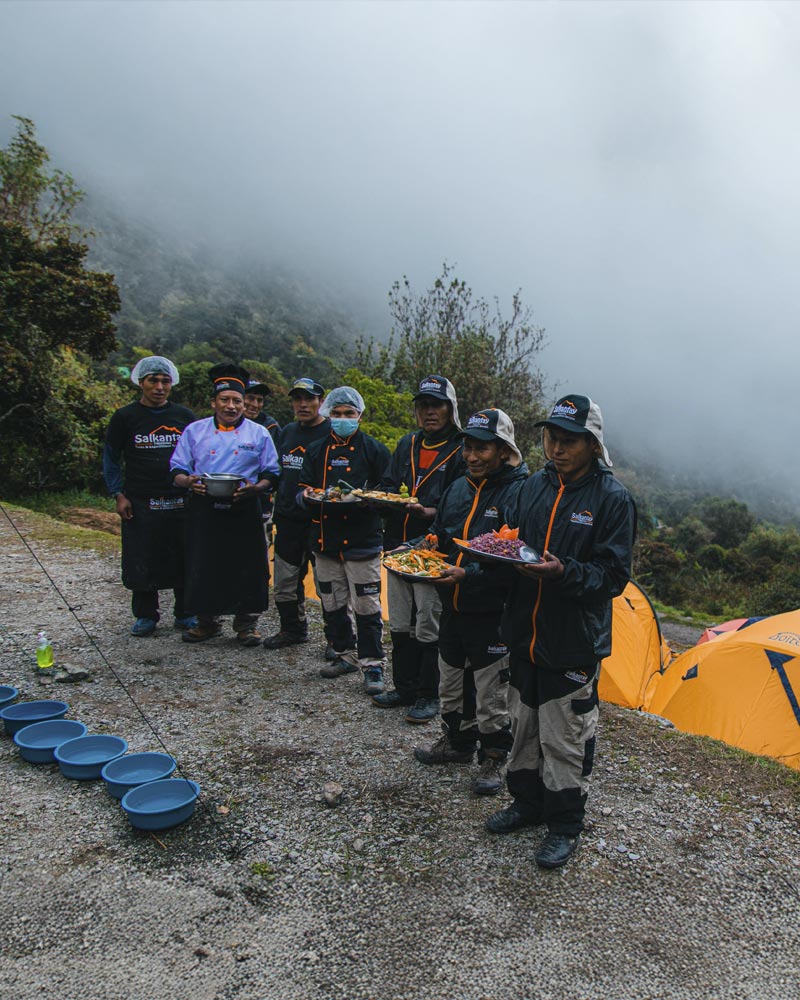
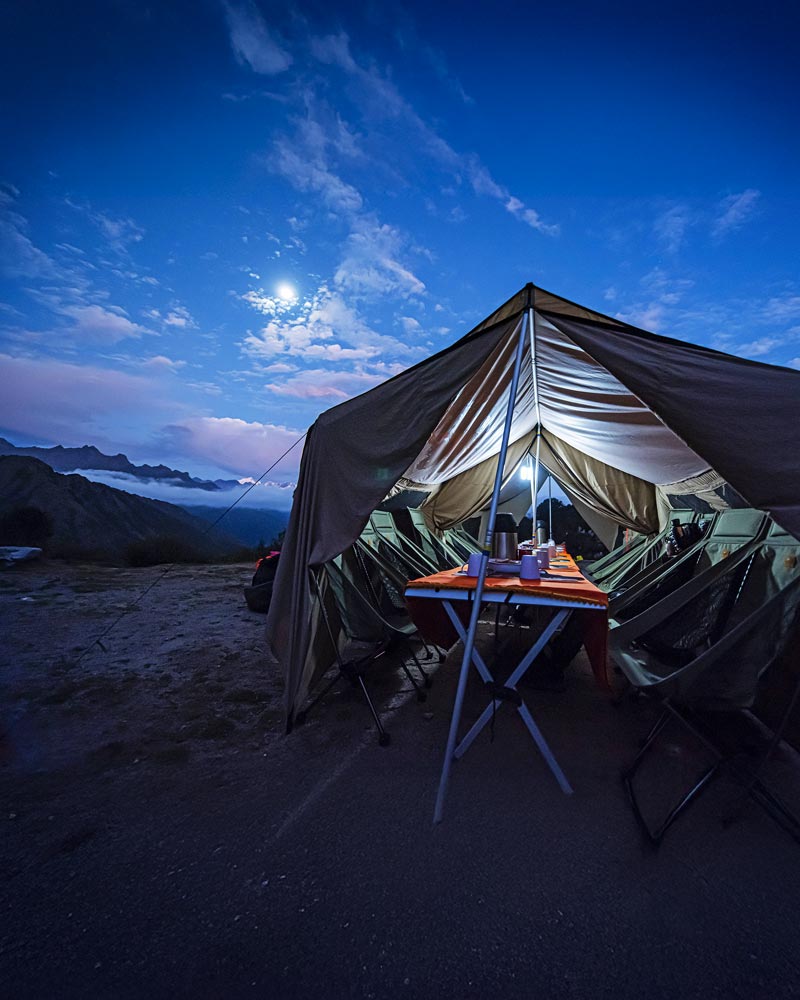
Training for Chefs Before the Inca Trail Expedition
Before embarking on the Inca Trail, chefs undergo specialized training to prepare them for the unique challenges of high-altitude cooking. This program covers high-altitude culinary techniques, menu planning, food transportation, accommodating dietary restrictions and allergies, and food safety and hygiene protocol, equipping them to deliver exceptional meals in demanding conditions.
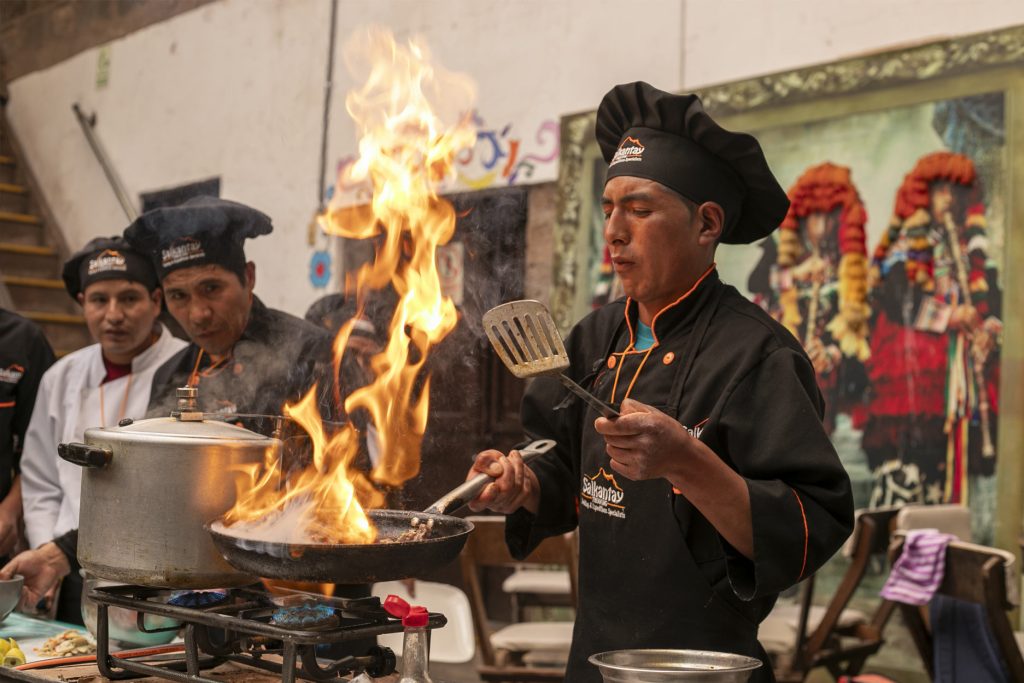
Who Are the High-Altitude Chefs?
High-altitude chefs primarily come from Andean communities, where they grew up immersed in ancestral culinary traditions. Combining years of experience with deep knowledge of local ingredients, they craft dishes that nourish body and soul. Their expertise transforms humble native produce into comforting meals infused with cultural heritage, a taste of home at dizzying elevations.
Their work demands extraordinary resilience. These culinary professionals meticulously plan nutritious menus, haul supplies across rugged terrain, and prepare meals in thin air and freezing temperatures. Yet, through skill and dedication, they perform daily miracles, turning simple ingredients into hearty, flavorful dishes that become a beacon of warmth and energy for weary trekkers. Every steaming plate they serve is a testament to Andean resourcefulness and hospitality.
The Role of Chefs on the Inca Trail
- Preparing Balanced Meals:
- They design menus with carbohydrates, proteins, healthy fats, and vitamins to energize hikers.
- Meals are typically hearty and varied, tailored to the physical demands of trekking.
- Logistics and Planning:
- They transport all ingredients, utensils, and cooking equipment from the start of the trek.
- They plan meticulously to ensure nothing runs out during the 4- to 5-day journey.
- Cooking in Extreme Conditions:
- They work at altitudes exceeding 3,000 meters, where lower atmospheric pressure prolongs cooking times.
- Using portable stoves and essential equipment, they achieve impressive results.
- Accommodating Special Diets:
- Many chefs are trained to adapt to vegetarian, vegan, gluten-free, or other dietary restrictions.
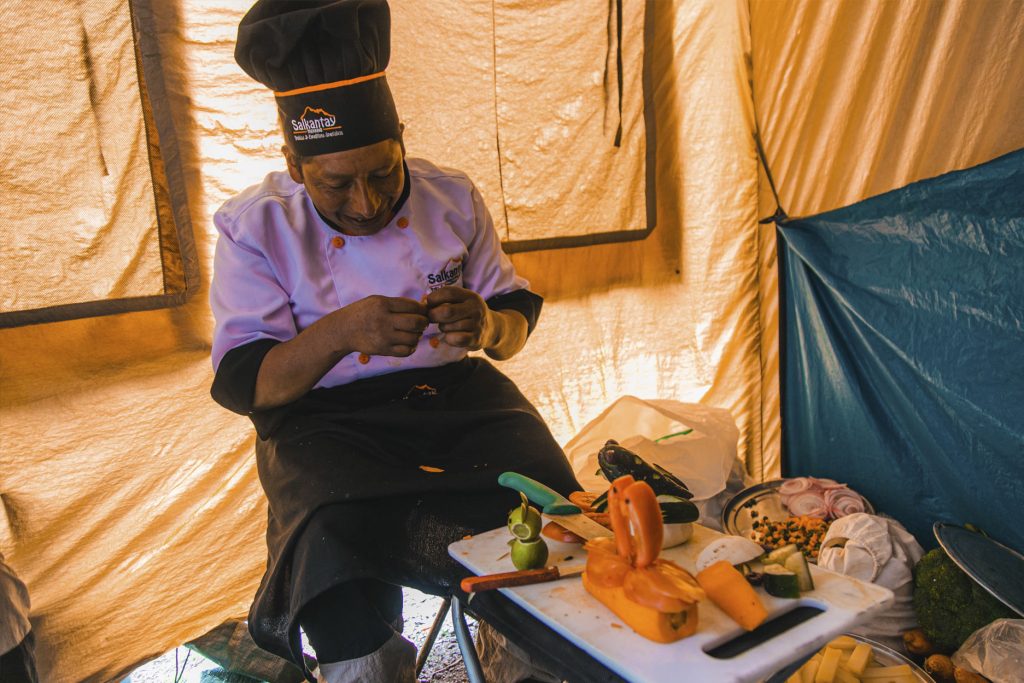
How the Chefs Work
The chefs of the Inca Trail operate under conditions that would challenge even the most skilled professionals. They set up makeshift kitchens in basic campsites at altitudes exceeding 3,000 meters, where the air is thin and temperatures can plummet. They are adaptable to harsh environments using portable stoves and stainless steel pots.
- Support Teams: The chefs work as part of a larger team, including porters (who carry equipment and supplies) and guides. Together, they ensure seamless operations throughout the trek.
- Mobile Kitchens: They carry portable stoves, pots, pans, and other essential utensils. Many also use fresh ingredients, such as vegetables and fruits, stored in portable coolers.
- Culinary Creativity: Despite the limitations, the chefs prepare traditional Peruvian dishes and innovative fusion meals, including soups, stews, pasta, desserts, and more.
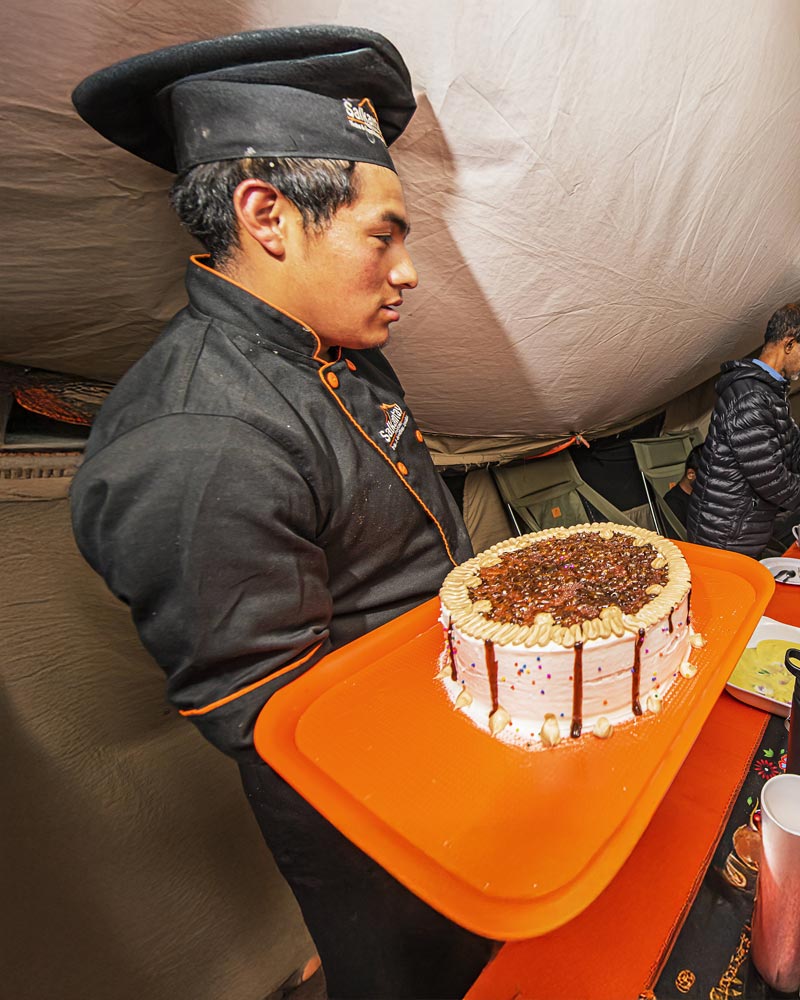
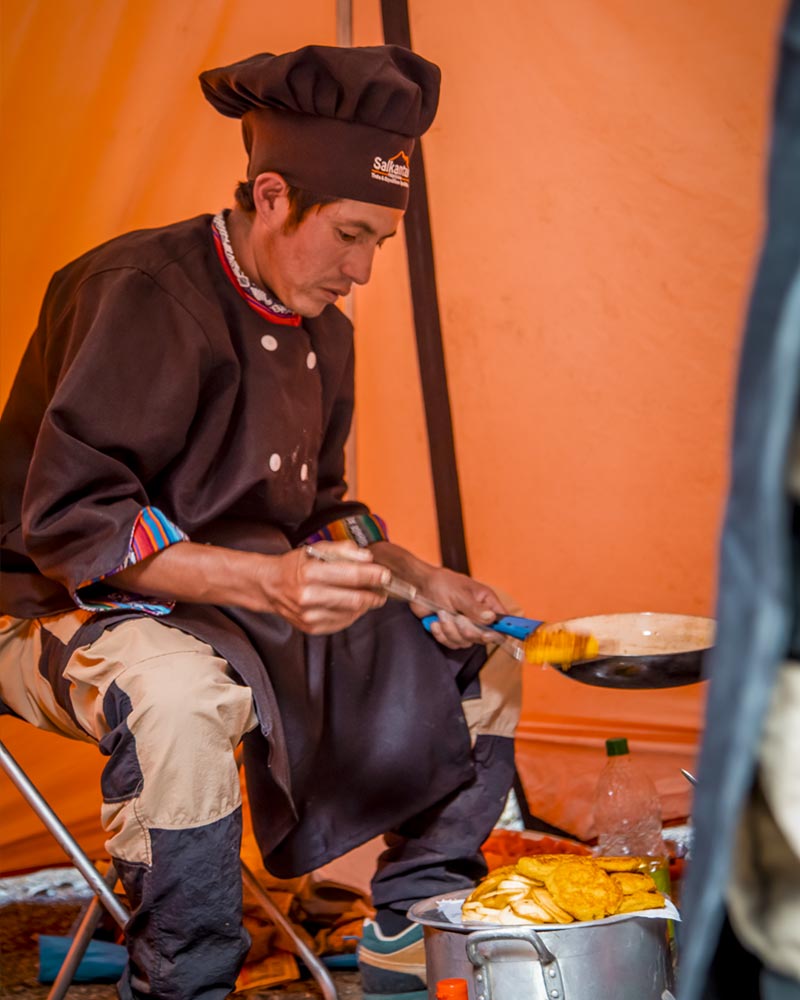
Signature Dishes Prepared by the Chefs
Despite challenging conditions, mountain chefs craft remarkably flavorful and varied dishes. They skillfully combine local ingredients like quinoa, native potatoes, and corn with time-honored techniques passed down through generations.
- Hearty Soups: Quinoa soup, vegetable soup, or creamy squash (pumpkin) soup.
- Main Courses: Lomo saltado (stir-fried beef with vegetables and fries), Peruvian-style chicken with rice, beef stew, pasta with tomato sauce and cheese, sautéed quinoa with vegetables (vegetarian option)
- Desserts: Mazamorra morada (purple corn pudding with fruit), rice pudding, fresh fruit like pineapple or mandarins
- Energy-Packed Breakfasts: Pancakes with honey or jam, scrambled eggs with toast, oatmeal with dried fruit
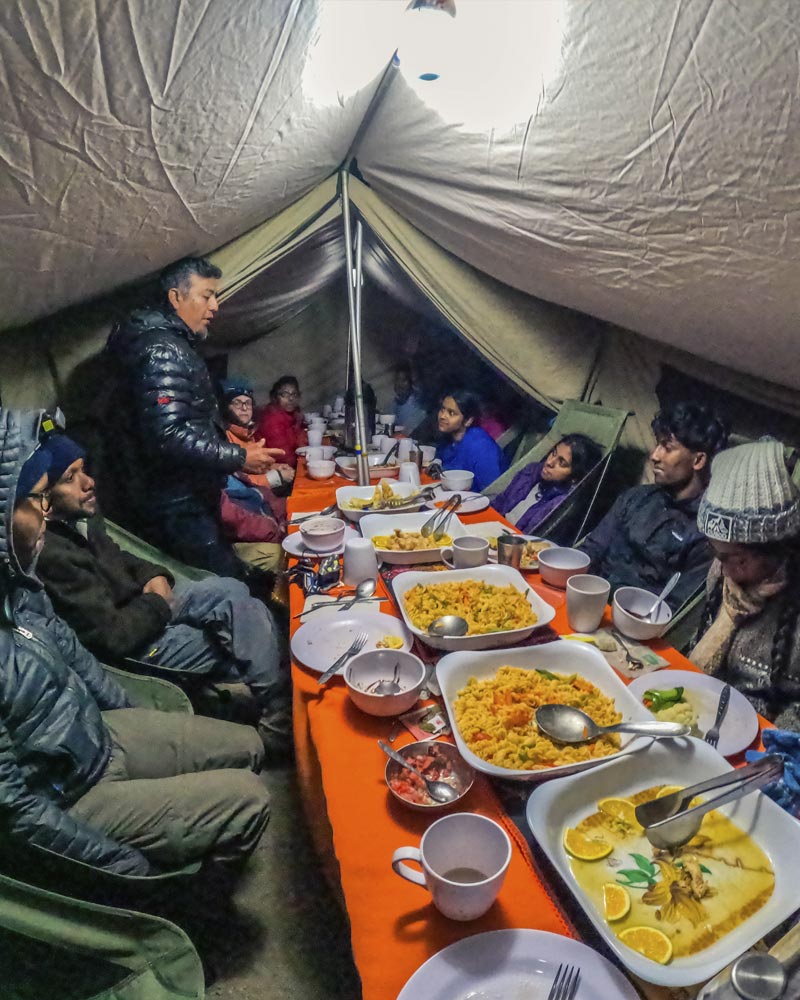
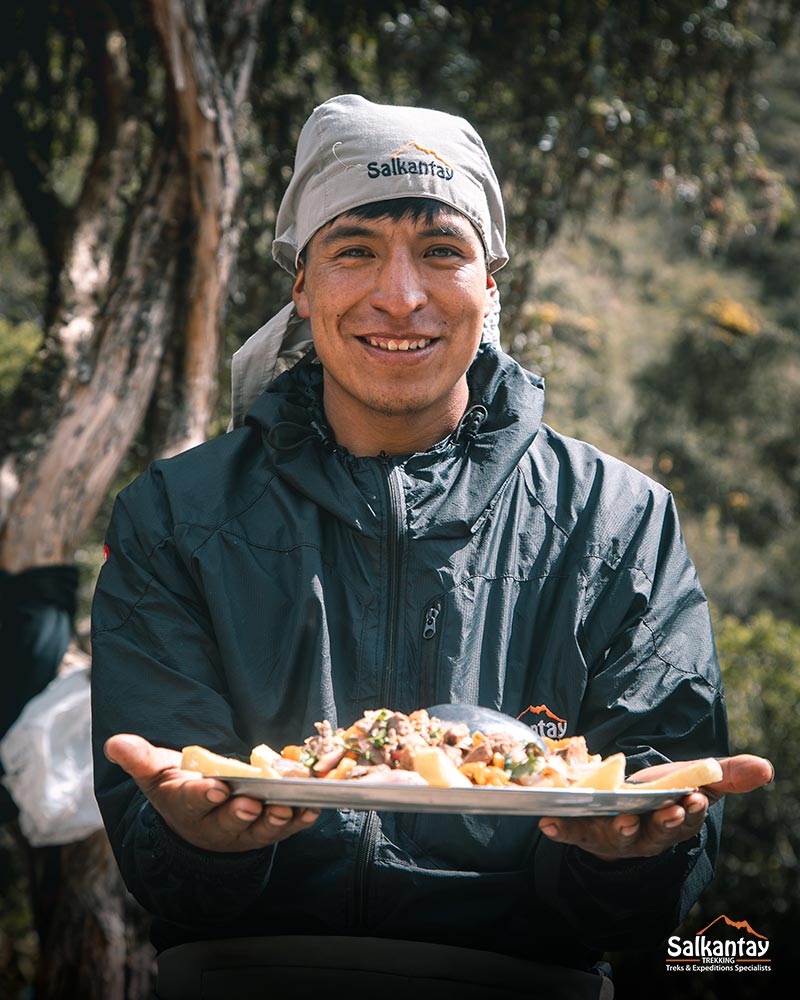
The Impact of Their Work: Beyond Mere Sustenance
For trekkers, the meals prepared by these chefs represent far more than just refueling; they’re a profound connection to Andean culture. Each bite reminds them of Peru’s culinary richness and the collective effort that makes this extraordinary experience possible.
Campsite Kitchens Along the Trail
On the Inca Trail, the most popular campsites for meal preparation and dining are Ayapata, Chaquicocha, and Wiñay Wayna. These locations feature designated cooking areas where chefs set up their stoves and work in teams to feed dozens of hikers. The atmosphere at these campsites is nothing short of magical: the aroma of freshly cooked food blends with the crisp mountain air, creating an unforgettable sensory experience.
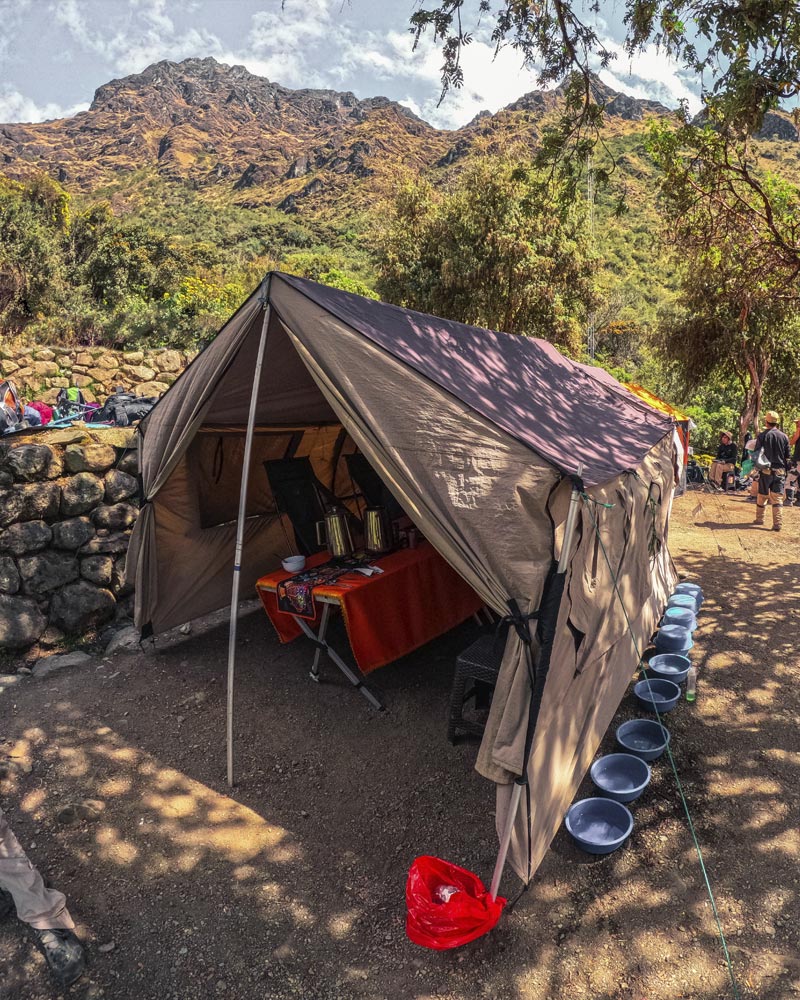
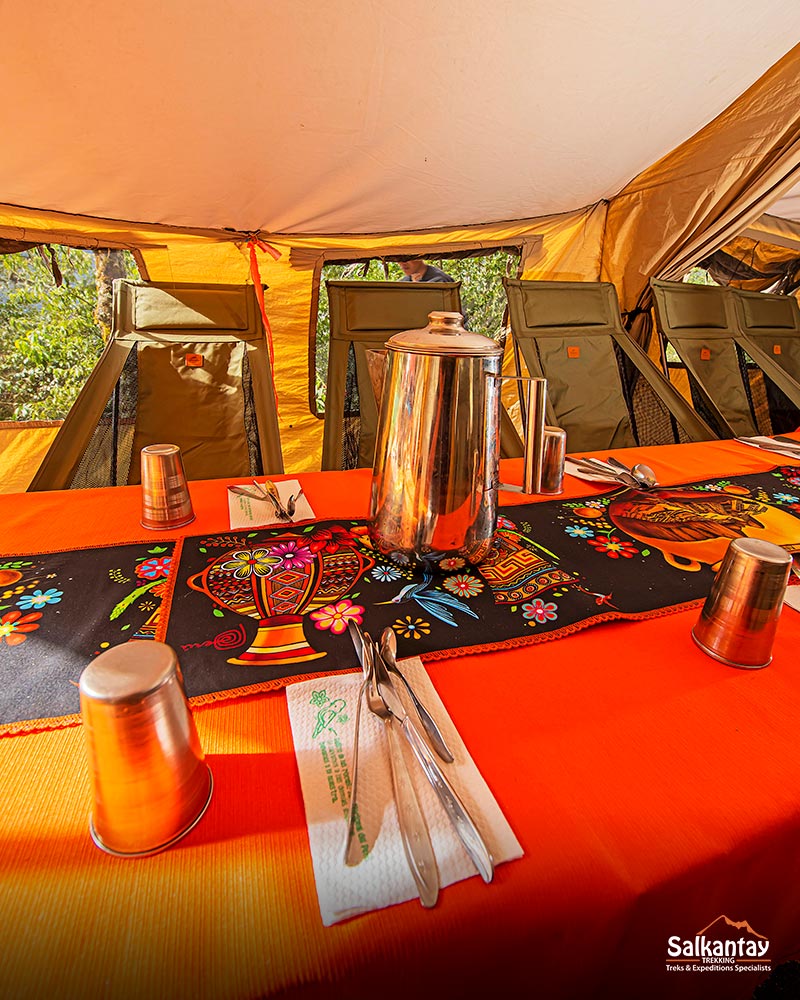
Honoring the Chefs: Culinary Guardians of the Inca Trail
These chefs are indispensable to the success of every Inca Trail expedition. Their work demands exceptional physical endurance and unwavering dedication. The rise of responsible tourism has recently helped ensure they receive fair treatment, proper wages, and safe working conditions.
A Legacy of Culinary Mastery
Peru’s mountain culinary tradition dates back centuries to when the Incas prepared sustenance for their armies and messengers. Today’s high-altitude chefs carry this legacy forward, blending ancient knowledge with modern techniques to delight travelers from around the globe. Many boast over 20 years of experience – a mastery that shines through ieverydish’s exceptional quality and authentic flavor.
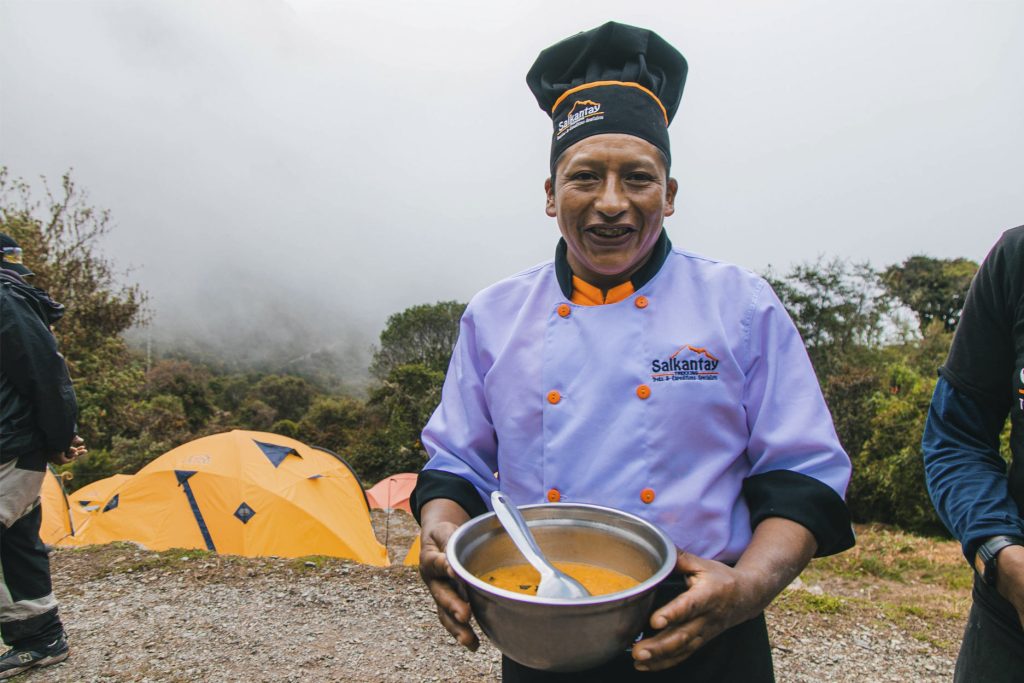
Conclusion: An Unforgettable Culinary and Adventure Experience
The chefs of the Inca Trail are the heart and soul of this adventure, transforming simple ingredients into flavorful dishes brimming with tradition that both energize and comfort trekkers. Their dedication, backed by years of experience and specialized training, guarantees an unforgettable culinary experience amidst the majestic Andes.
If you’re seeking an adventure that combines hiking, culture, and gastronomy, the Inca Trail is the perfect choice. We offer trekking services with expert guides, flawless logistics, and the opportunity to savor these unique flavors. Book with us and discover why the Inca Trail is truly a life-changing experience!
You may be interested in:
- Safety and Hygiene for Hiking in Cusco
- Salkantay Trekking: Tourism in Constant Growth
- Top Tips before hiking the Inca Trail to Machu Picchu
- Inca Trail 2025: Complete Trekking Guide
- Inca Trail: Essential Gear for an Unforgettable Adventure
- How to be prepared for the Inca Trail?
- Exploring the Charms of the Inca Trail: A Memorable Experience



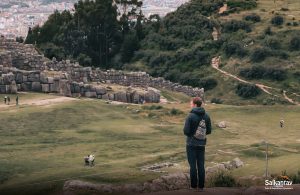

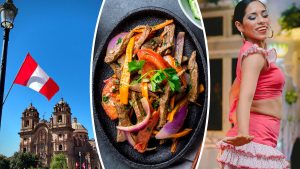




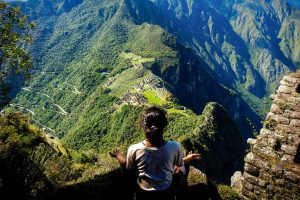
Leave A Reply